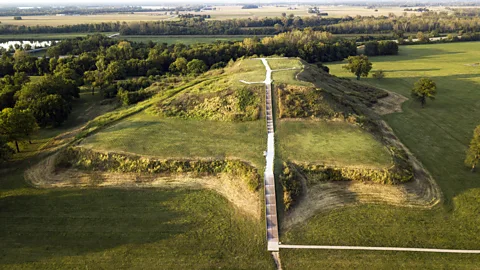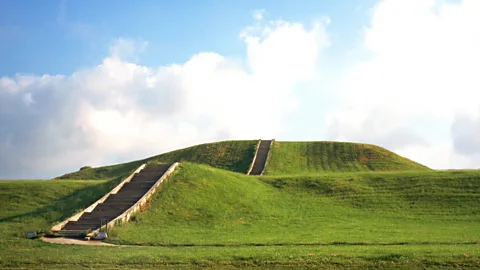The US' lost, ancient megacity
 MattGush/Getty Images
MattGush/Getty ImagesIn the ancient Mississippian settlement of Cahokia, vast social events – not trade or the economy – were the founding principle.
Pity the event planners tasked with managing Cahokia's wildest parties. A thousand years ago, the Mississippian settlement – on a site near the modern US city of St Louis, Missouri – was renowned for bashes that went on for days.
Throngs jostled for space on massive plazas. Buzzy, caffeinated drinks ed from hand to hand. Crowds shouted bets as athletes hurled spears and stones. And Cahokians feasted with abandon: burrowing into their ancient waste pits, archaeologists have counted 2,000 deer carcasses from a single, blowout event. The logistics must have been staggering.
Things are quieter these days at Cahokia, now a placid Unesco site. But towering, earthen mounds there hint at the legacy of the largest pre-Columbian city north of Mexico. A cosmopolitan whir of language, art and spiritual ferment, Cahokia's population may have swelled to 30,000 people at its 1050 BCE peak, making it larger, at the time, than Paris.
 Michael S Lewis/Getty Images
Michael S Lewis/Getty ImagesIt's what Cahokia didn't have that's startling, writes Annalee Newitz in their recent book Four Lost Cities: A Secret History of the Urban Age. The massive city lacked a permanent marketplace, confounding old assumptions that trade is the organising principle behind all urbanisation.
"Cahokia was really a cultural centre rather than a trade centre. It still boggles my mind. I keep wondering 'Where were they trading? Who was making money">window._taboola = window._taboola || []; _taboola.push({ mode: 'alternating-thumbnails-a', container: 'taboola-below-article', placement: 'Below Article', target_type: 'mix' });
